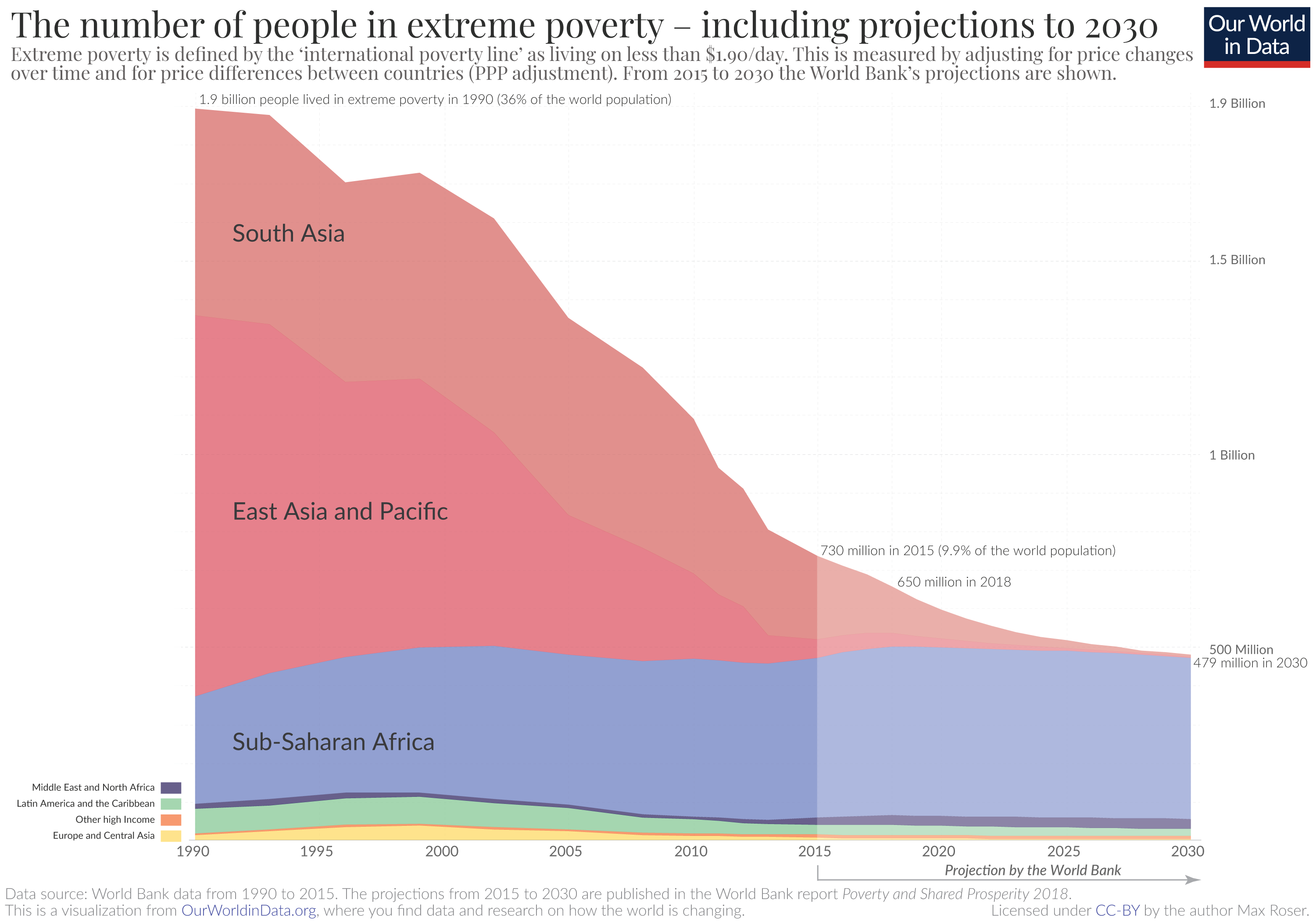Good News in the War on Poverty
Good news about global poverty? Yes! And there is much more than you’d expect!
In 2015, countries around the world adopted the United Nations Sustainable Development Goals (SDGs), a set of 17 targets intended to combat poverty, reduce inequality, improve global health outcomes and protect the planet. Prior to the SDGs, the incredibly successful Millennium Development Goals concluded in 2015 after 25 years of remarkable achievements in tackling global poverty. The SDGs seek to further expand upon these accomplishments, with a key target to end extreme poverty for all people by 2030.
- In 2015, the percentage of the global population living in extreme poverty fell below 10% for the first time. By March 2023, this figure stood at 8.5%, according to the World Bank.
- As of March 2023, 659 million people live in extreme poverty, down from 902 million in 2012 and 1.9 billion in 1990.
- While pre-pandemic global poverty rates had reduced by more than half since 2000, the COVID-19 pandemic reversed some of this progress. In 2020, the global extreme poverty rate reached 9.3%, up from 8.4% in 2019. But, by March 2023, this rate had fallen by 0.8%.
- In East Asia and the Pacific, the proportion of people living in extreme poverty took a nosedive from 60.2% in 1990 to below 5% in 2019.
- Over the past decade, the percentage of the world’s workers living in extreme poverty decreased by half from 2010 to 2019, dropping from 14.3% to 7.1%.
- Between 2004 and 2019, malaria deaths decreased by 27.9% from 754,000 to 544,000.
- In 2018, a total of 470,000 people died from AIDS-related illnesses in Africa, representing about a 40% decrease since 2010. The number of people currently on life-saving treatment has more than doubled from 2010 to 2015.
- By 2017, HIV/AIDS no longer stood as the leading cause of death in Africa.
- In 2017, the World Poverty Clock launched, tracking the progress toward the 17 SDG goals. Taking into account the conflict in Ukraine, it currently estimates that 40,000 people escape poverty every day.
- In June 2023, 5.18 billion people around the world are using the Internet, equivalent to 64.6% of the human population. In 2000, just 7% of the global population had internet access.
- According to UNICEF, the global prevalence of stunting decreased from 33% in 2000 to 22.3% in 2022.
- The gross primary school enrollment rate in sub-Saharan Africa rose from 58% in 2000 to 79% in 2019.
- Global literacy rates (individuals 15 and older) have risen from 81% in 2000 to 87% in 2020.
- The world noted an estimated 287,000 maternal deaths globally in 2020, a decrease of more than 35% from 446,000 in 2000.
- The global under-5 mortality rate has dropped by almost 60%, from 93 deaths per 1,000 live births in 1990 to 38 in 2021.
- Female political participation has doubled since 2000, rising from 11.69% in 2000 to 26.13% in 2021.
- According to the Interparliamentary Union, in March 2023, for the first time ever, every single country had women represented in their parliaments.
- More than 180 million more girls were enrolled in primary and secondary school in 2018 in comparison to 1995.
- Over the past 25 years, female enrollment in college or university increased threefold to 115 million women enrolled in programs in 2018.
- Global electricity access has increased from 78.4% in 2000 to 91.4% in 2021.


